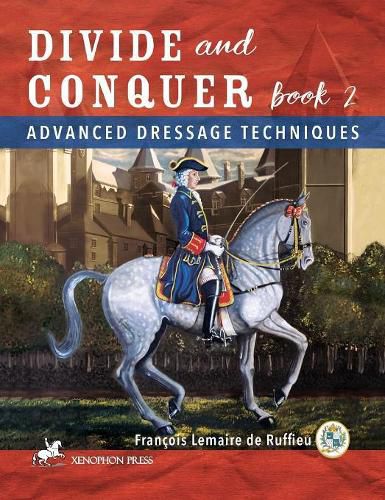Readings Newsletter
Become a Readings Member to make your shopping experience even easier.
Sign in or sign up for free!
You’re not far away from qualifying for FREE standard shipping within Australia
You’ve qualified for FREE standard shipping within Australia
The cart is loading…






This title is printed to order. This book may have been self-published. If so, we cannot guarantee the quality of the content. In the main most books will have gone through the editing process however some may not. We therefore suggest that you be aware of this before ordering this book. If in doubt check either the author or publisher’s details as we are unable to accept any returns unless they are faulty. Please contact us if you have any questions.
Just as small streams make big rivers, Divide and Conquer Book 1 explains a myriad of details on how to address each of the horse’s body parts for training purposes. Divide and Conquer Book 2 regroups these details to show how to accomplish all of the upper level movements and provides several techniques designed to educate riders to achieve their short and long term goals. In a clear and simple method, Francois Lemaire de Ruffieu describes all the longitudinal and lateral movements including flying changes of lead at close intervals, canter pirouette, piaffe and passage, along with patterns and exercises that develop them.
All techniques for the upper level movements employ the horse’s natural reflexes to stimuli at their foundations. The techniques provide a sound basis of training for any level and any discipline.
Dressage is an Art, and as such, can be viewed in many different ways. History shows that some extraordinary riding masters were radically different in their theories: Riders physical characteristics and differences in horse breeding have influenced Riding Masters leaving us a rich history of techniques with which to educate our horses properly. Dressage tends to follow fashion. Nevertheless, the goals of dressage have always remained the same: render the horse agreeable, easy to ride, well-balanced, straight and responding instantaneously to the slightest aids. Dressage is a school of obedience as well as a school of thought.
$9.00 standard shipping within Australia
FREE standard shipping within Australia for orders over $100.00
Express & International shipping calculated at checkout
This title is printed to order. This book may have been self-published. If so, we cannot guarantee the quality of the content. In the main most books will have gone through the editing process however some may not. We therefore suggest that you be aware of this before ordering this book. If in doubt check either the author or publisher’s details as we are unable to accept any returns unless they are faulty. Please contact us if you have any questions.
Just as small streams make big rivers, Divide and Conquer Book 1 explains a myriad of details on how to address each of the horse’s body parts for training purposes. Divide and Conquer Book 2 regroups these details to show how to accomplish all of the upper level movements and provides several techniques designed to educate riders to achieve their short and long term goals. In a clear and simple method, Francois Lemaire de Ruffieu describes all the longitudinal and lateral movements including flying changes of lead at close intervals, canter pirouette, piaffe and passage, along with patterns and exercises that develop them.
All techniques for the upper level movements employ the horse’s natural reflexes to stimuli at their foundations. The techniques provide a sound basis of training for any level and any discipline.
Dressage is an Art, and as such, can be viewed in many different ways. History shows that some extraordinary riding masters were radically different in their theories: Riders physical characteristics and differences in horse breeding have influenced Riding Masters leaving us a rich history of techniques with which to educate our horses properly. Dressage tends to follow fashion. Nevertheless, the goals of dressage have always remained the same: render the horse agreeable, easy to ride, well-balanced, straight and responding instantaneously to the slightest aids. Dressage is a school of obedience as well as a school of thought.